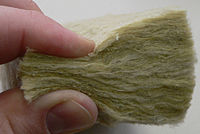
Photo from wikipedia
Aspergillus fresenii and Aspergillus sulphureus produce ochratoxin A (OTA), which is a secondary metabolite of Aspergillus and Penicillium species, with nephrotoxic effects and potential carcinogenic activity. The aim of this… Click to show full abstract
Aspergillus fresenii and Aspergillus sulphureus produce ochratoxin A (OTA), which is a secondary metabolite of Aspergillus and Penicillium species, with nephrotoxic effects and potential carcinogenic activity. The aim of this study was to determine the effects of temperature (20, 30, and 37 °C), water activity (0.82, 0.86, 0.90, 0.94, and 0.98 aw), incubation period (5, 10, 15, and 30 days) on fungal growth, and OTA production by A. fresenii and A. sulphureus on Nyjer oil seeds. There was no fungal growth at 0.82 aw. The two fungal species were able to produce OTA from the fifth day of incubation from 0.86 to 0.98 aw and temperature 20 to 37 °C. Aspergillus fresenii produced the highest concentration of OTA (643 μg/kg) at 0.90 aw and 37 °C within 15 days, while A. sulphureus produced the highest level of OTA (724 μg/kg) at 0.98 aw and 20 °C within 10 days. The optimum water activity and temperature for the growth of both fungi were similar at 0.94 aw and at 30 °C. There was statistically significant difference between the levels of OTA production among the two fungi. Overall, A. sulphureus produced significantly higher levels of OTA (p < 0.05). Higher temperature (37 °C) and 0.90–0.94 aw were optimal for OTA production by A. fresenii. Our results show that Nyjer seeds can support the growth of A. fresenii and A. sulphureus and OTA production, and the two species had similar temperature and water activity requirements for growth but different requirements for OTA production on Nyjer seeds.
Journal Title: Mycotoxin Research
Year Published: 2018
Link to full text (if available)
Share on Social Media: Sign Up to like & get
recommendations!